CentOS, short for Community Enterprise Operating System, has been a popular choice among Linux users and administrators for its stability, security, and compatibility with the Red Hat Enterprise Linux (RHEL) ecosystem. However, with the discontinuation of CentOS, the need for viable alternatives has become essential.
This article will explore the top CentOS alternatives and the criteria to consider when choosing the best option for your needs.
How Important was CentOS in the Linux World?
CentOS was known for its stability, making it an ideal choice for production servers and mission-critical applications. As a free, open-source clone of RHEL, CentOS provided users with compatibility with enterprise-grade software without the associated costs. With a large and active community, CentOS users could rely on extensive resources and support for troubleshooting and development.
Is CentOS being discontinued?
The CentOS project announced in December 2020 that they would be shifting their focus from CentOS Linux to CentOS Stream. This decision left former CentOS users and organizations looking for alternatives, as CentOS Stream is more of a rolling release with less stability compared to the traditional CentOS Linux.
Why do you need CentOS alternative?
The discontinuation of CentOS has significantly impacted the Linux community. There are several reasons why someone might need CentOS alternatives:
CentOS 7 End of Life
CentOS 7, released in 2014, will reach its end of life (EOL) on June 30, 2024. Until then, CentOS 7 users will continue to receive maintenance updates and security patches. However, after the EOL, there will be no further updates.
CentOS 8 End of Life
Originally scheduled for a 10-year support cycle, CentOS 8’s EOL was abruptly moved to December 31, 2021, following the announcement of CentOS Stream. As a result, CentOS 8 users have already faced the challenge of migrating to a new distribution.
CentOS Future and its impact on the Linux community
With the discontinuation of the traditional CentOS and the introduction of CentOS Stream, the future of CentOS has changed. CentOS Stream will serve as a rolling-release distribution, acting as a development branch for RHEL.
Although CentOS Stream may appeal to developers and those interested in contributing to RHEL’s development, it might not be suitable for production environments requiring stability.
With CentOS no longer being an ideal choice for many users, finding alternatives that offer similar stability, compatibility, and support has become crucial. These alternatives should provide a seamless Linux experience while maintaining the features that made CentOS popular.
Factors to Consider when Choosing a CentOS Alternative
Compatibility and stability
When choosing a CentOS alternative, ensuring that the new distribution is compatible with your existing applications, tools, and hardware is crucial. Stability is also a key factor, as a stable and reliable operating system is essential for mission-critical applications and production environments.
Support and community
A strong support system and an active community are crucial when selecting a CentOS alternative. Community forums, mailing lists, and documentation can help you troubleshoot issues and stay updated with the latest developments. Additionally, consider whether the distribution offers commercial support, which can be valuable for organizations requiring professional assistance.
Ease of use and management
The ease of use and management of a Linux distribution is an important consideration, especially for those who may be new to Linux or have limited experience. A user-friendly distribution with a robust package manager, clear documentation, and simple administration tools can significantly reduce the learning curve and make system management more efficient.
Performance and security
The performance and security of your chosen CentOS alternative are critical factors, especially for businesses and organizations handling sensitive data. Look for a regularly updated and patched distribution with a history of strong performance and security features.
Licensing and costs
Open-source Linux distributions typically have no licensing fees. However, some distributions, such as RHEL, require a subscription to access updates and support. When choosing a CentOS alternative, consider the costs associated with the distribution and whether it fits within your budget.
What are the best CentOS Alternatives?
As Linux servers become increasingly popular for their scalability, reliability, and cost savings, the need for a reliable alternative to CentOS becomes even more critical. Fortunately, several great options are available to users looking to switch from one of the most widely used distributions in the world.
AlmaLinux
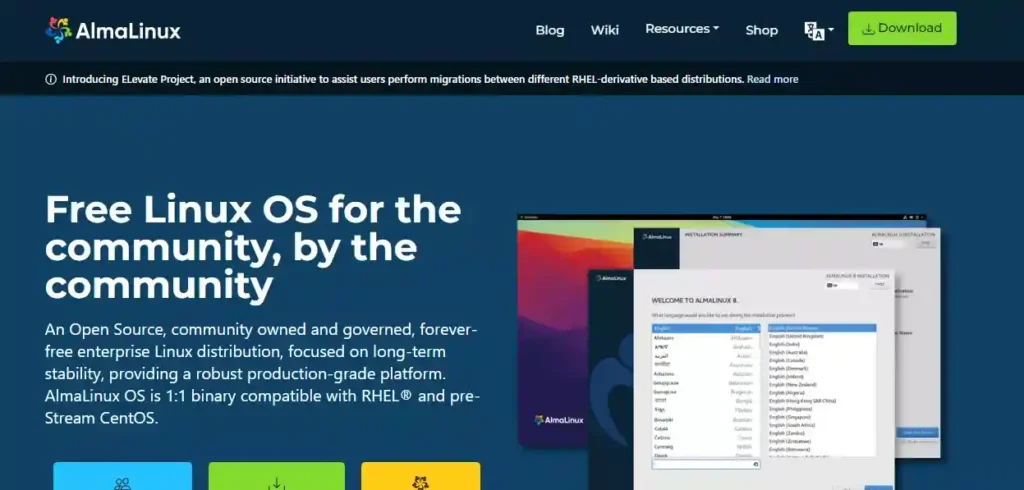
AlmaLinux is a free, open-source RHEL fork designed to be a CentOS alternative. It was created by CloudLinux in response to the discontinuation of CentOS. Its main goal is to be a long-term supported RHEL clone with commercial support available. The first stable release was in March 2021, and it aims to provide a seamless transition for CentOS users.
AlmaLinux has seen rapid adoption, with thousands of downloads and installations. The project has also received support and contributions from notable Linux and cloud computing companies.
Features
- 1:1 Binary-compatible with RHEL
- Stable and secure
- Regular updates and patches
- Wide range of software packages
- User-friendly installation and management
Supported Architectures
- Intel/AMD (x86_64)
- ARM64 (aarch64)
- IBM PowerPC (ppc64le)
- IBM Z (s390x)
Pros
- Easy transition from CentOS
- Compatible with RHEL
- Strong community support
- Backed by CloudLinux
Cons
- Relatively new project
- Limited enterprise support options
AlmaLinux Comparison with CentOS
AlmaLinux closely resembles CentOS regarding stability, compatibility, and ease of use. It is designed to be a drop-in replacement for CentOS, offering a nearly identical experience.
Use cases and community support
AlmaLinux is suitable for web servers, virtualization hosts, and various enterprise applications. The project has a growing and active community, offering support through forums, mailing lists, and social media platforms.
Rocky Linux
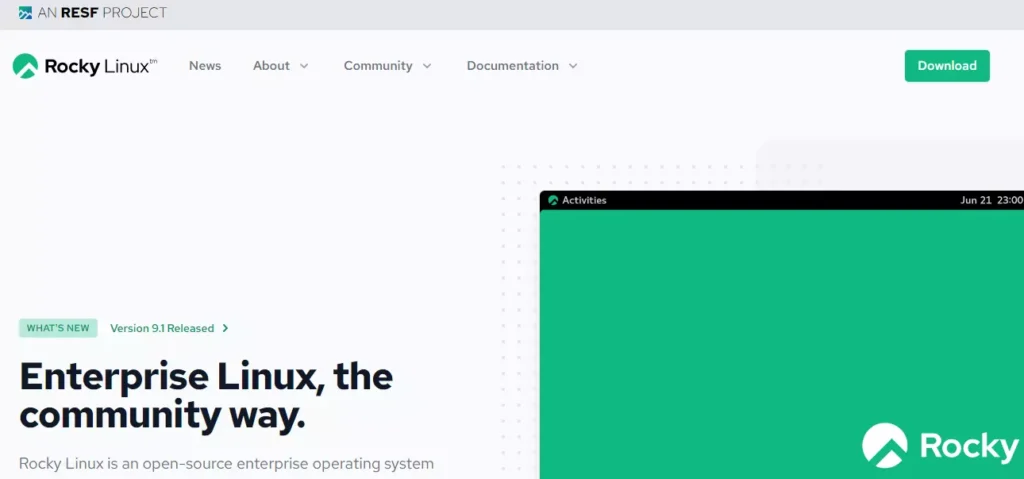
Rocky Linux is another free, open-source RHEL fork developed as a CentOS alternative. It was founded by Gregory Kurtzer, one of the original CentOS creators. The first stable release was in June 2021, designed to provide a stable and production-ready platform.
Since its launch, Rocky Linux has seen a steady increase in adoption, with thousands of downloads and installations worldwide. The project has also attracted attention and support from various companies and organizations in the Linux ecosystem.
Features
- Binary-compatible with RHEL
- Emphasis on stability and security
- Regular updates and patches
- Wide range of software packages
- Easy installation and management
Supported Architectures
- x86_64 (64-bit Intel/AMD)
- ARM64 (also known as AArch64 or ARMv8)
Pros
- Founded by a CentOS creator
- Compatible with RHEL
- Strong community support
- Production-ready platform
Cons
- Relatively new project
- Limited enterprise support options
Rocky Linux Comparison with CentOS
Rocky Linux shares many similarities with CentOS regarding stability, compatibility, and user experience. It is designed to be a direct replacement for CentOS and provide a familiar environment for users.
Use cases and community support
Rocky Linux is suitable for various applications, including web servers, database servers, and enterprise workloads. It has an active and growing community, with support available through forums, mailing lists, and social media platforms.
Oracle Linux
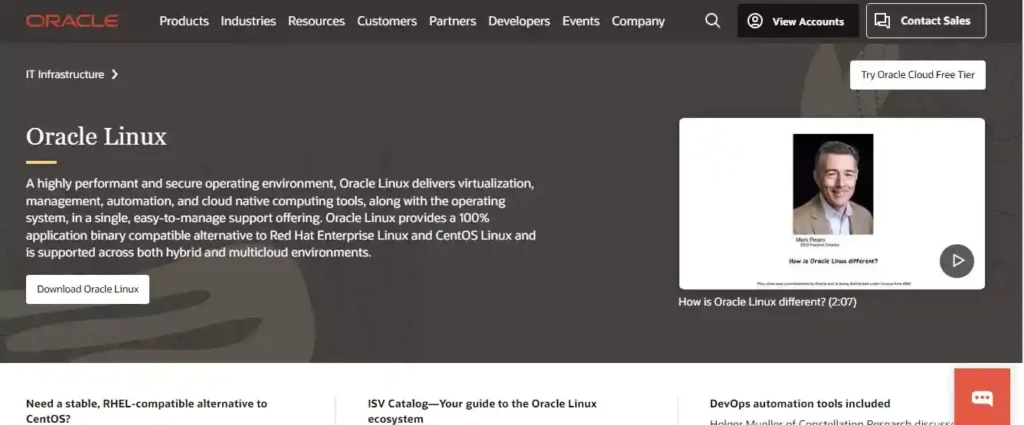
Oracle Linux, launched in 2006, is an enterprise-class Linux distribution developed by Oracle Corporation. It is based on the Red Hat Enterprise Linux (RHEL) codebase and is designed to be binary-compatible with RHEL while offering additional features and enhancements. Oracle Linux maintains 100% compatibility with existing applications on your CentOS server.
Oracle Linux has seen steady growth in adoption over the years, with a significant user base among enterprise customers. It ranks among the top Linux distributions in various surveys and reports.
Features
- Binary-compatible with RHEL
- Regular updates and security patches
- Unbreakable Enterprise Kernel (UEK) for improved performance and stability
- Optimized for Oracle products and cloud services
- Access to Oracle’s extensive software ecosystem
Supported Architectures
- x86_64 (64-bit Intel/AMD)
- ARM64 (also known as AArch64 or ARMv8)
Pros
- RHEL compatibility
- Enhanced performance with UEK
- Integration with Oracle products
- Free for use and redistribution
Cons
- Limited community support
- Tied to Oracle’s ecosystem
Oracle Linux Comparison with CentOS
Oracle Linux is similar to CentOS in terms of RHEL compatibility and stability. However, it is more tailored to Oracle’s ecosystem and offers enhanced performance with the Unbreakable Enterprise Kernel.
Use cases and community support
Oracle Linux is best suited for organizations using Oracle products or cloud services, as well as for database servers and other enterprise workloads. Community support is available but limited compared to other CentOS alternatives.
Red Hat Enterprise Linux (RHEL)
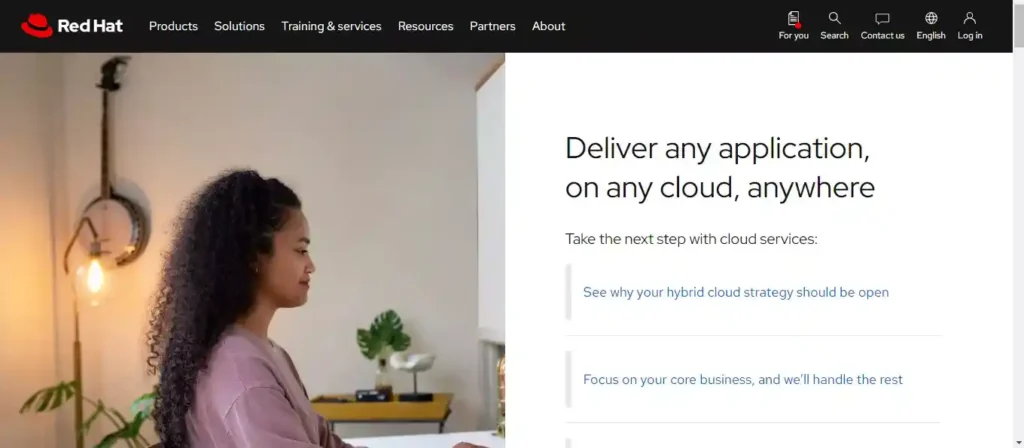
Red Hat Enterprise Linux, first released in 2000, is a commercial Linux distribution developed by Red Hat. It is the basis for CentOS and other RHEL-based distributions, and it is designed to provide a stable and high-performance platform for enterprise workloads. In addition to this, RHEL boasts robust security features, such as SELinux, allowing you to have confidence in your system’s safety.
RHEL is one of the most popular Linux distributions for enterprise environments and consistently ranks among the top Linux distributions in various surveys and reports. Its adoption is widespread among businesses, government institutions, and other organizations worldwide.
Features
- Stability and long-term support
- Regular updates and security patches
- Comprehensive software ecosystem
- Enterprise-grade support options
- Extensive documentation and certifications
Supported architectures
- x86_64
- ARM64
- IBM Z
- IBM LinuxONE
- IBM Power
Pros
- Industry-standard Linux distribution
- Reliable and secure platform
- Vast software ecosystem
- Professional support and services
Cons
- Expensive for small businesses or individuals
- Less community-driven compared to alternatives
RHEL Comparison with CentOS
RHEL is the upstream source for CentOS, providing the same stability and security but with the added benefits of enterprise support, certifications, and a more extensive software ecosystem. However, RHEL comes with a higher cost compared to CentOS.
Use cases and community support
RHEL is suitable for various enterprise applications, from web servers to high-performance computing clusters. While community support is available, RHEL is primarily geared toward customers who require professional support and services.
Debian Linux
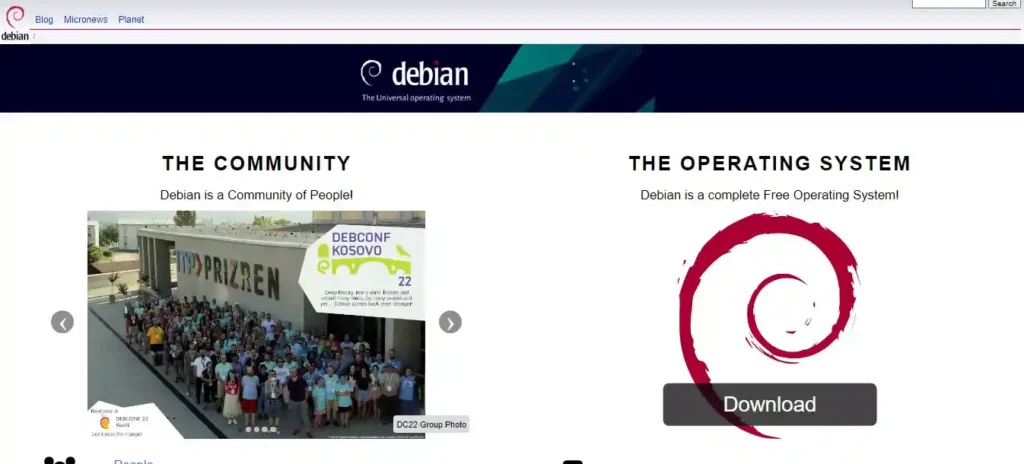
Debian, founded in 1993 by Ian Murdock, is one of the oldest and most well-respected Linux distributions. It is a community-driven project focusing on stability, security, and freedom. Debian serves as the foundation for numerous other distributions, including Ubuntu.
Debian consistently ranks among the top Linux distributions in popularity and user satisfaction. Its widespread adoption and influence are evident in the numerous Debian-based distributions, including Ubuntu and its derivatives.
Features
- Strong focus on stability and security
- Massive software repository with over 59,000 packages
- Multiple architecture support
- APT package management system
- Highly configurable environment
- Long-term support releases
Supported Architectures
- amd64 (64-bit Intel/AMD x86_64)
- arm64 (64-bit ARM AArch64)
- armel (ARM EABI – ARMv4t and higher)
- armhf (ARM hard-float – ARMv7 and higher, with hardware floating-point)
- i386 (32-bit Intel/AMD x86)
- mips64el (64-bit little-endian MIPS)
- mipsel (32-bit little-endian MIPS)
- ppc64el (64-bit little-endian PowerPC)
- s390x (IBM System z)
Pros
- Reliable and secure platform
- Extensive software availability
- Large and active community
- Great for learning Linux fundamentals
Cons
- Slower release cycle compared to some alternatives
- Less enterprise-focused
Debian Comparison with CentOS
Debian offers a similar level of stability and security as CentOS but follows a different release model and has a more extensive software repository. It is less focused on enterprise environments, but it provides a reliable base for various use cases.
Use cases and community support
Debian is suitable for various applications, from personal desktops to servers and embedded systems. The Debian community is large and active, providing excellent support through mailing lists, forums, and other resources.
CentOS Stream
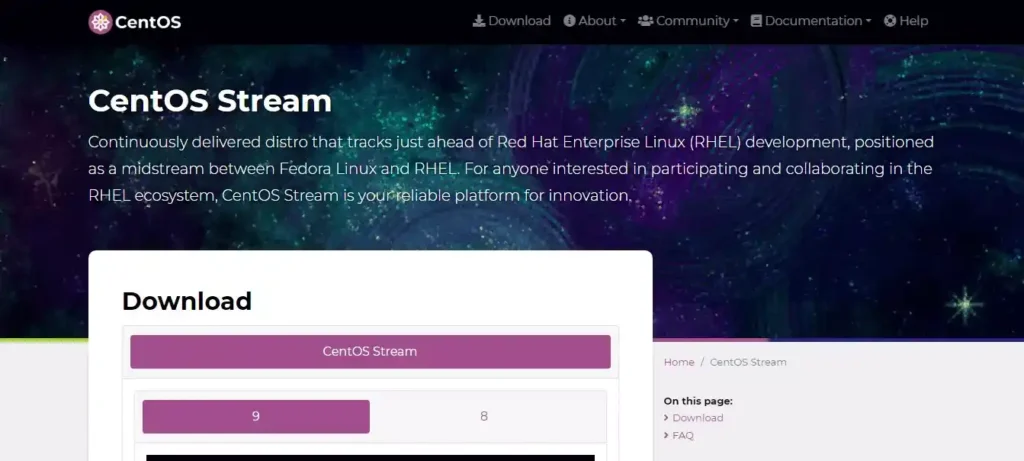
CentOS Stream, introduced in 2019, is a rolling-release Linux distribution developed by the CentOS Project. It serves as an upstream development branch for Red Hat Enterprise Linux (RHEL) and provides users with early access to the latest RHEL features and updates.
As a relatively new distribution and a niche offering, CentOS Stream does not have a large user base compared to other CentOS alternatives. However, its unique role in the RHEL ecosystem has garnered attention and interest among developers and testers who seek to influence RHEL’s development and stay up-to-date with the latest features.
Features
- Rolling-release model
- Early access to RHEL features
- Community-driven development
- Close collaboration with Red Hat
- Compatibility with RHEL ecosystem
Supported Architectures
- x86_64 (64-bit Intel/AMD)
- aarch64 (64-bit ARM, also known as ARM64 or ARMv8)
Pros
- More frequent updates
- Early access to new RHEL features
- Opportunities for community contributions
Cons
- Less stable than CentOS
- Not suitable for production environments
CentOS Stream Comparison with CentOS
CentOS Stream differs from CentOS in its release model, with more frequent updates and a focus on serving as an upstream development branch for RHEL. This makes it less stable and not ideal for production environments, but it provides early access to new RHEL features.
Use cases and community support
CentOS Stream is best suited for developers, testers, and enthusiasts who want to be on the cutting edge of RHEL development or contribute to the project. The CentOS community offers support through mailing lists, forums, and other resources.
VzLinux
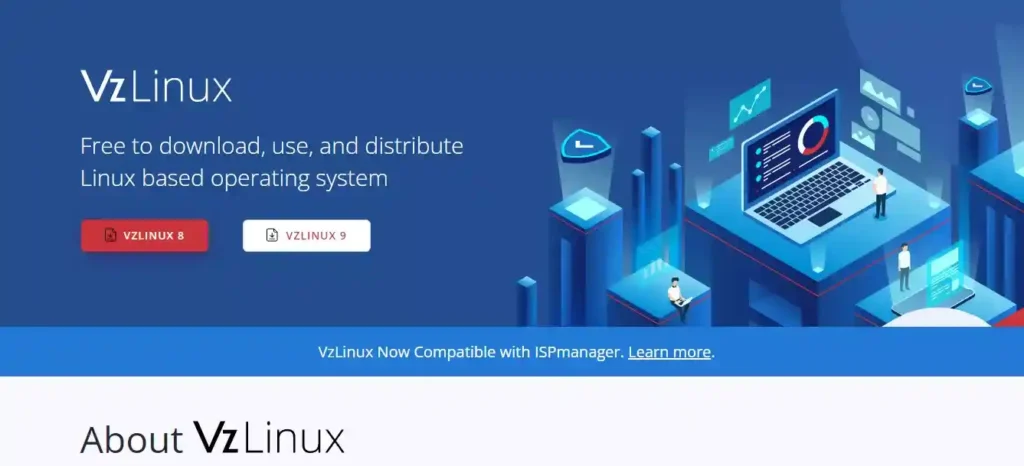
VzLinux is a free and open-source CentOS clone based on the sources of Red Hat Enterprise Linux (RHEL). It is developed and maintained by Virtuozzo, a company known for its virtualization solutions and containers. VzLinux aims to provide a stable and reliable operating system for servers, containers, and virtual environments.
Features
- 100% binary-compatible with RHEL
- Regular updates and patches
- Optimized for virtual environments and container
- SELinux support
Supported Architectures
- x86_64 (64-bit Intel/AMD)
- ARM64 (also known as AArch64 or ARMv8)
Use Cases
VzLinux is suitable for various use cases, including:
- Data centers and enterprise servers
- Cloud environments
- Web hosting
- Infrastructure and development platforms
Community Support
VzLinux is backed by Virtuozzo, a company with a history of contributing to open-source projects and supporting its products. While the community around VzLinux might not be as large as some other RHEL-based distributions, users can expect a certain level of support and engagement from the company.
Additional CentOS replacements
Ubuntu Server
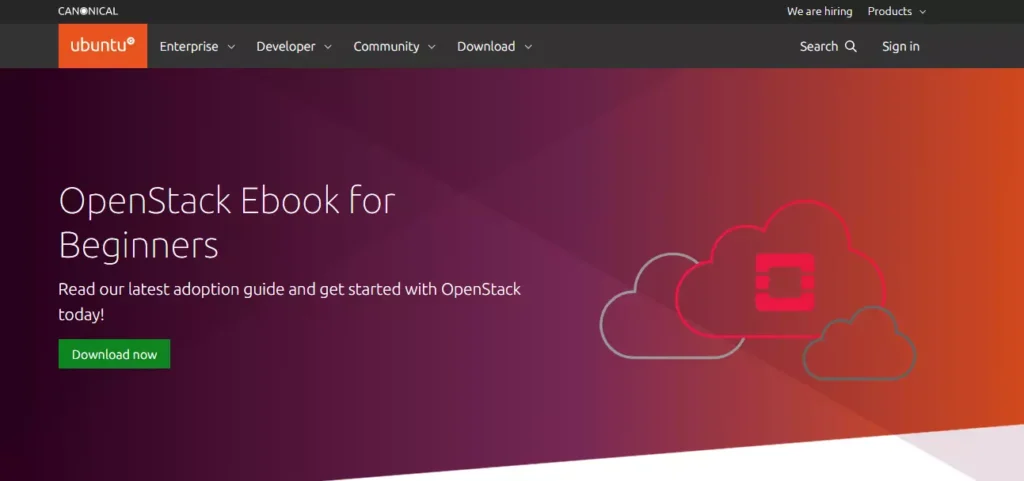
Ubuntu, based on Debian, is a popular Linux distribution developed by Canonical. It is known for its user-friendliness, strong community support, and regular release cycle.
Ubuntu offers three release types: Long-Term Support (LTS) for stability, regular releases for the latest features, and a rolling release model with Ubuntu Core. It boasts stronger security with access control mechanisms such as AppArmor profiles.
Ubuntu server is suitable for various use cases, including personal desktops, servers, IoT devices, and cloud infrastructure.
Fedora
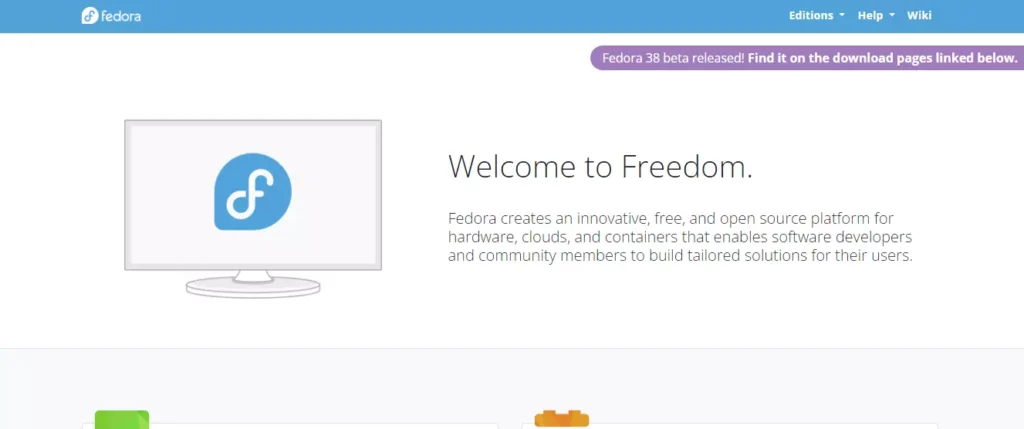
Fedora, another CentOS replacement, is a community-driven Linux distribution sponsored by Red Hat. It acts as a testing ground for new features and improvements before they are integrated into RHEL. Fedora is known for its cutting-edge software, strong security features, and short release cycle, making it ideal for developers and advanced users who value innovation. However, its fast-paced development may not be suitable for production environments that require long-term stability.
OpenSUSE
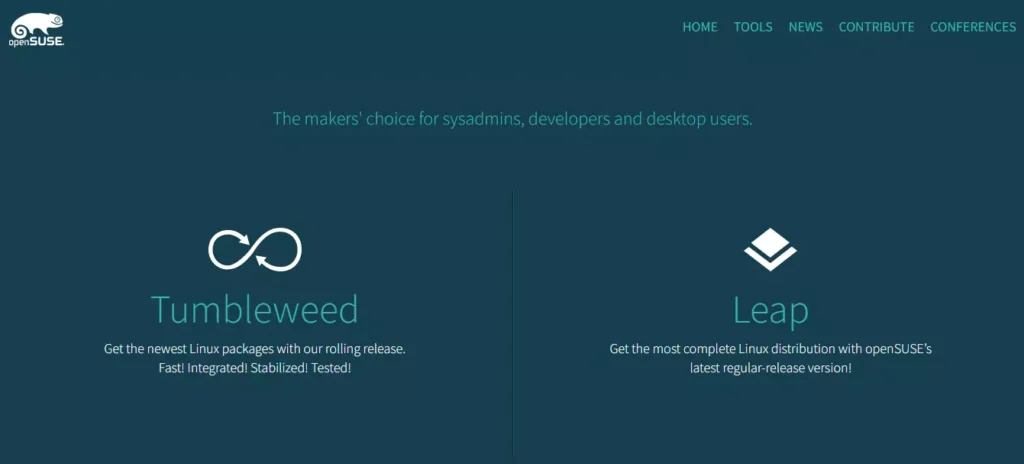
openSUSE is a versatile and user-friendly Linux distribution developed by the openSUSE Project, sponsored by SUSE. It offers two main release options: openSUSE Leap, which focuses on stability and long-term support, and openSUSE Tumbleweed, a rolling release model for users seeking the latest features.
OpenSUSE is known for its robust package manager, strong community support, and excellent documentation. It is suitable for a variety of use cases, from personal desktops to servers and cloud deployments.
Arch Linux
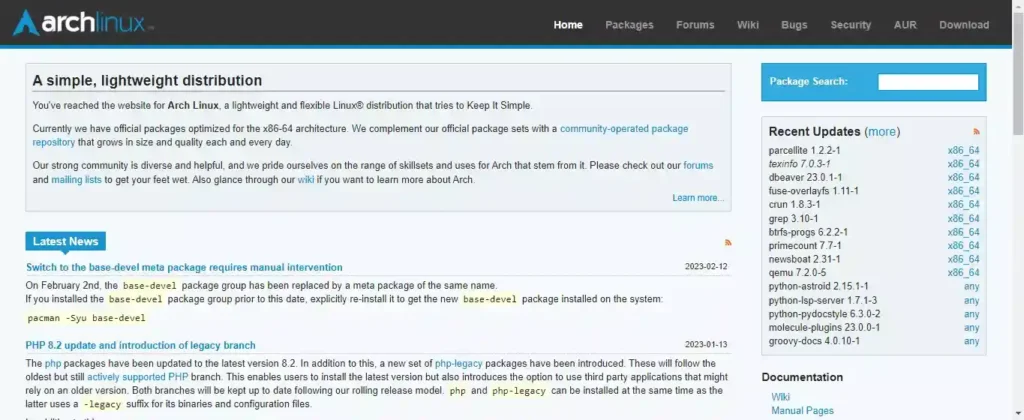
Arch Linux is a lightweight and flexible Linux distribution that adheres to the “keep it simple” philosophy. It uses a rolling release model, allowing users to stay up-to-date with the latest software.
Arch Linux is designed for experienced users who prefer a high level of control and customization over their system. It features a minimal base installation, allowing users to build their system according to their needs. However, its hands-on approach may not be suitable for beginners or those seeking a more user-friendly experience.
Bottom line
The discontinuation of CentOS Linux has led to the emergence of new Linux distributions designed to fill the gap and provide a stable foundation for server environments. As the Linux community continues to adapt and evolve, it remains crucial for users and organizations to stay informed and choose the most suitable distribution based on their individual needs, ensuring a secure and reliable server environment.
Before replacing CentOS, evaluating your specific requirements and determining which distribution best meets your needs is vital. Factors such as compatibility, stability, support, ease of use, performance, security, and costs must be considered to ensure a seamless transition and a reliable, secure operating environment.
We have discussed several CentOS alternatives, including AlmaLinux, Rocky Linux, Oracle Linux, RHEL, Debian Linux, CentOS Stream, and other Linux distros like Ubuntu, Fedora, openSUSE, and Arch Linux. Each alternative offers unique features, support, and community resources.
FAQs
When is CentOS Linux 7 End of Life?
CentOS 7 is scheduled to reach its End of Life on June 30, 2024.
When is CentOS Linux 8 End of Life?
CentOS 8 reached its End of Life on December 31, 2021.
When is CentOS Stream 8 End of Life?
CentOS Stream 8 will reach its End of Life on May 31, 2024.
When is CentOS Stream 9 End of Life?
CentOS Stream 9 will reach its End of Life on May 31, 2027.
When is CloudLinux 6 End of Life?
CloudLinux 6 reached its End of Life on November 30, 2020.
When is CloudLinux 7 End of Life?
CloudLinux 7 is scheduled to reach its End of Life on June 30, 2024, similar to CentOS 7.
When is CloudLinux 8 End of Life?
CloudLinux 8 is set to have a similar lifecycle to RHEL 8, which has an End of Life scheduled for May 31, 2029.
When is CloudLinux 9 End of Life?
CloudLinux 9 will reach its End of Life on May 31, 2032.
When is AlmaLinux 8 End of Life?
AlmaLinux OS 8 will reach its End of Active Support on May 1, 2024, and its End of Security Support on March 1, 2029.
When is AlmaLinux 9 End of Life?
AlmaLinux OS 9 will reach its End of Active Support on May 31, 2027, and its End of Security Support on May 31, 2032.



Top CentOS Alternatives: The Best Guide to Linux Servers